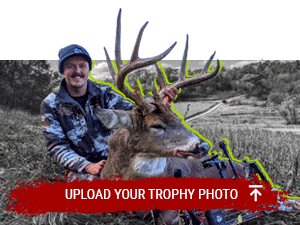The draw brimmed with fog as I settled into a funnel stand my brother had positioned. I hunkered deeper into my camo coat as an ice-cold mist spewed from above. Despite the classic November conditions, the funnel remained stagnant well after daylight. After eight straight days of bowhunting in South Dakota, I was beginning to have doubts.
A panting doe brought sudden life to the funnel. Sure enough, not one, but two good bucks trailed behind. I grabbed my bow and gave the first buck a quick glance through my 10x42s, but soon realized his tines were mostly busted. He sailed through my shooting lane in hot pursuit. The second buck was a bull-bodied 8-pointer. He looked awfully good to me.
On a suicide squeeze, the South Dakota 8-pointer entered my shooting lane, and a swift mouth-grunt stopped him in his tracks. The 28-yard shot deflated both lungs, and I began shivering wildly from the adrenaline rush and bone-chilling elements. I couldn’t help but thank God for a happy ending to a slow hunt.
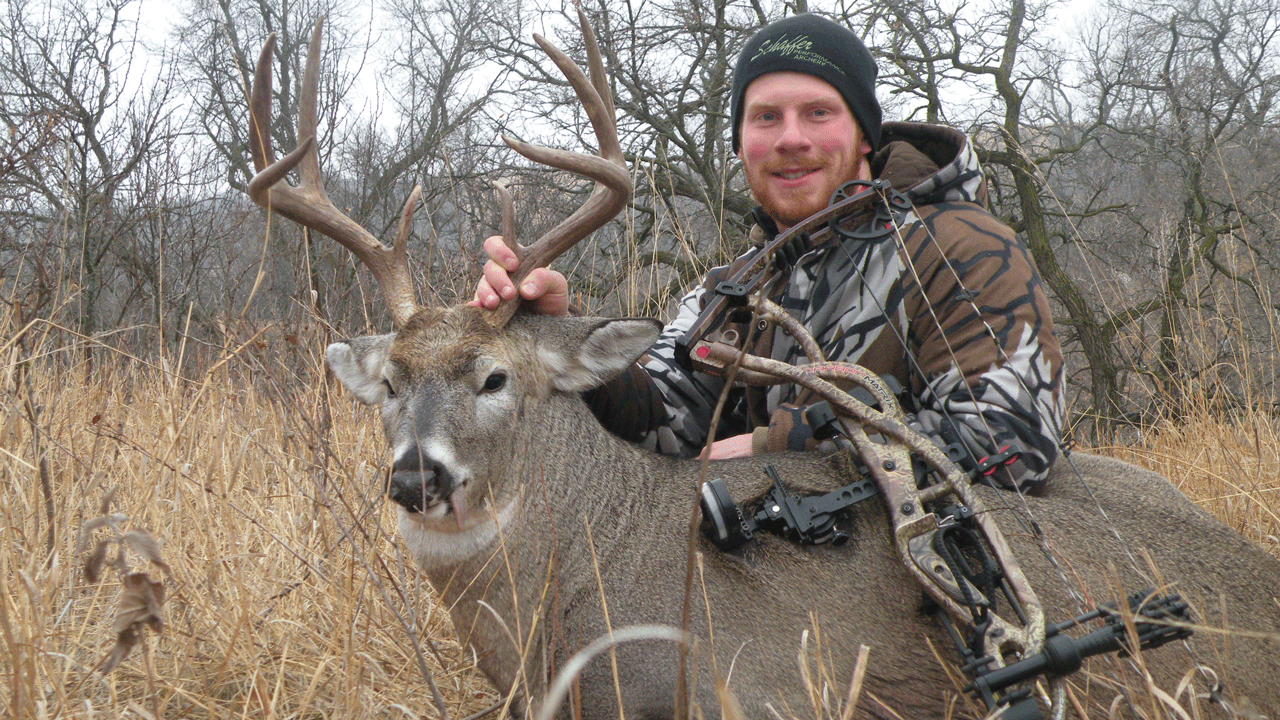
The author with the buck that opened his eyes to using funnels for rutting bucks.
Understanding Funnels
When I started hunting, I was taught to hunt near deer sign — defined trails, rubs, scrapes, etc. Field edges are often rich with all three, so I spent most of my teenage years guarding field edges. I saw lots of deer and shot many does, but saw little in terms of shooter bucks. I knew something amiss with my approach, but I couldn’t place my finger on it.
It makes sense that mature bucks would waltz right out into a doe-filled field in November, doesn’t it? Well, bucks habitually scent-check fields from the downwind side, often without actually entering them. They cover as much ground as possible, relying mostly on their nose to locate estrous does. And as they travel between food sources and doe bedding areas, they use terrain features.
Field-edge setups can and sometimes do yield buck encounters, but when they don’t, you must revisit your rut playbook for a high-odds alternative. During 17 years of bowhunting pressured whitetails, I’ve found funnels consistently produce buck encounters during the rut. And, if you position your stand properly, bucks traveling through funnels are basically on a suicide squeeze. In other words, they’re traveling a route that leads them within top-pin range.
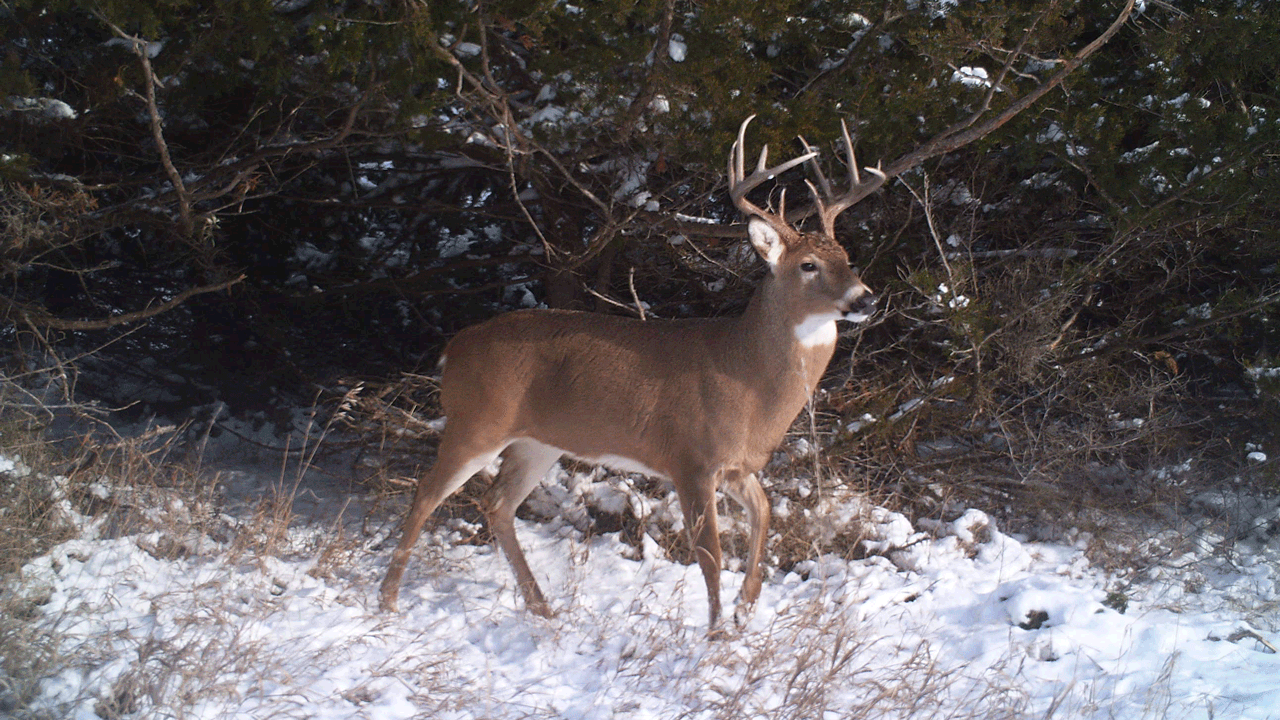
Do you know how to hunt the funnels that put the squeeze on big bucks?
Funnel Anatomy
I’ve heard them called everything from “skinny pinches” to “bottlenecks.” Call them whatever you want, these are the locations where deer travel through tight spots perfect for a bow ambush. These are generally created naturally by terrain, but logs or fencing can be placed to manipulate deer traffic between points A and B. Funnels include gate openings, timber belts along creeks or river on the plains, logging roads running through unnegotiable brush, openings between large brush heaps, shallow creek crossings with sandbars, or narrow oak ridges leading from bedding to agriculture. Rivers often have shelves or benches that eventually lead to a funnel, too.
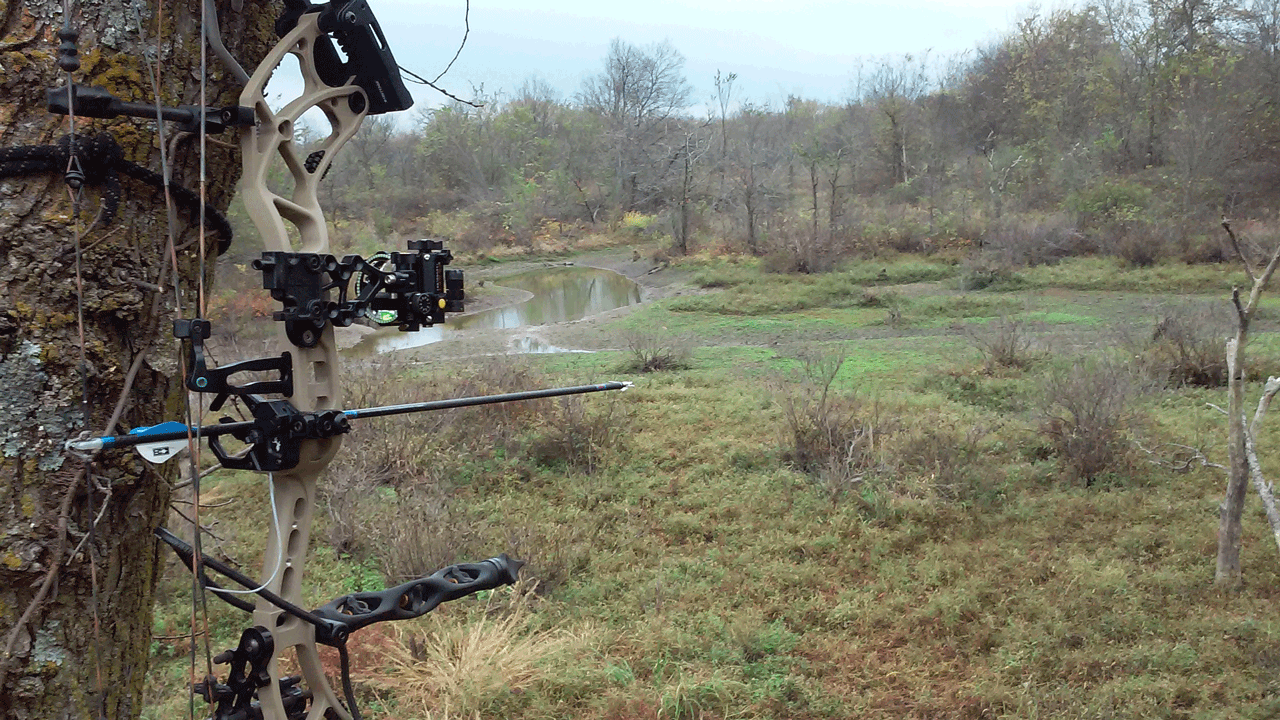
On the plains where there is little topography, look to rivers or creeks lined with trees. Whitetail bucks use rivers as travel corridors during the rut, and those travel corridors often neck down into a funnel sooner or later, creating a solid bow ambush.
Finding Them
Locating funnels is as simple as studying aerial imagery and topographical maps of your hunting area. Locate obvious food sources and bedding areas, then study the terrain between these two whitetail necessities. Next, put your boots to work. I did exactly that to take my largest buck to date on public soil.
During a recon mission, I located a grassy funnel flanked on one side by a cliff, and a ravine on the other. I hung my stand in a tree on the edge of the ravine at the funnel’s mouth, which provided shooting coverage all the way to the cliff. Sure enough, an estrous doe pulled the buck right through the funnel my first time in for a classic suicide-squeeze hunt.
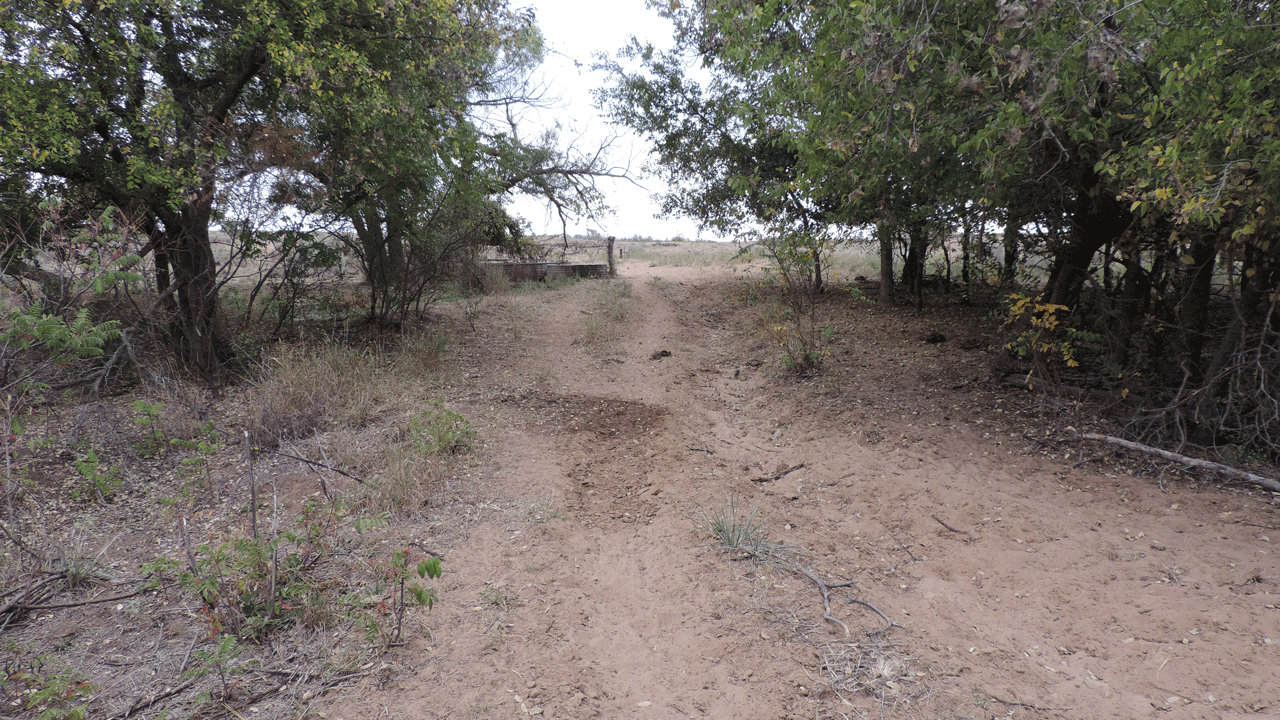
Roads and gates can even be ideal funnel locations for putting the squeeze on a big buck.
Terrain, Not Sign
Don’t become discouraged if you’re not finding lots of buck sign once you locate funnels. Bucks are usually mission-minded as they travel through them – either chasing a doe or looking for one. They don’t always stop to rake a tree or paw out a scrape, though you might get lucky and find those clues, too.
Plotting Your Setup
If possible, position your stand or ground blind near the funnel’s narrowest point so deer pass by within easy bow range. Deer are liable to travel funnels in either direction, so set your stand for the prevailing winds, if possible. For example, if you’re hunting a north/south running funnel and the wind blows predominantly from the west, position your stand east of the funnel so you can hunt it more frequently without getting winded.
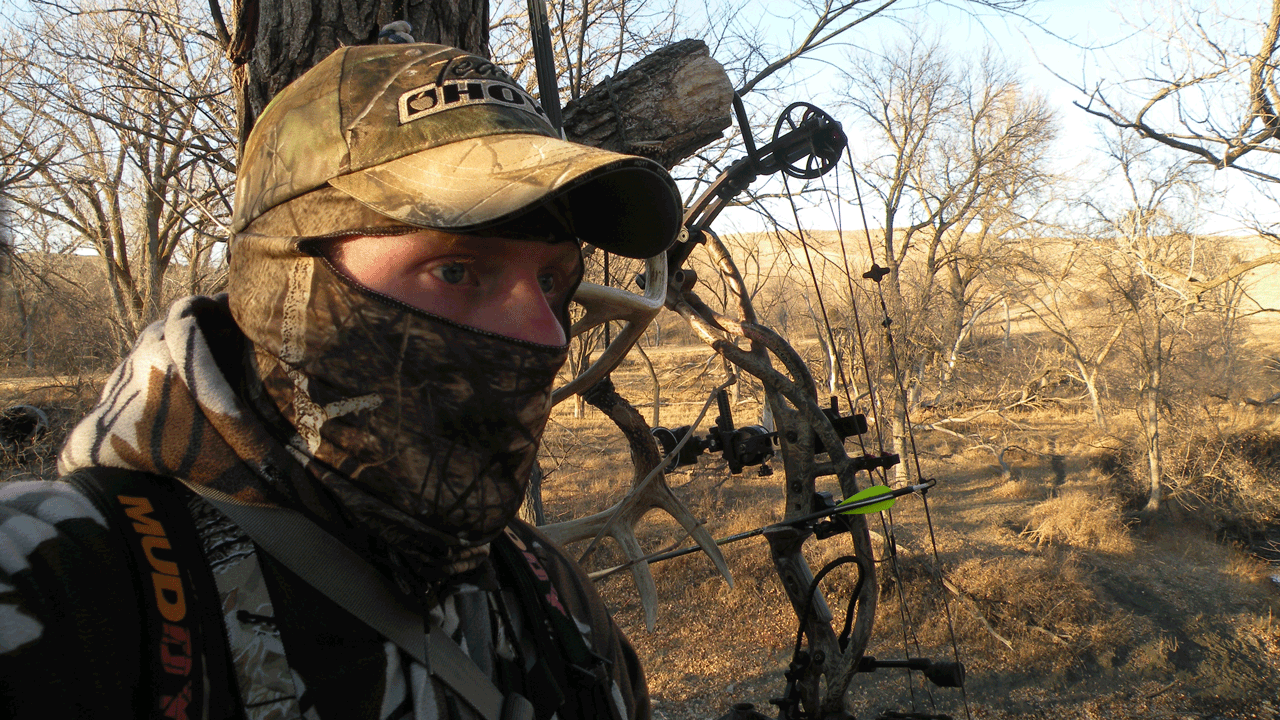
The action can happen at any time of day when hunting in funnels during the rut. Be prepared to sit all day.
Final Words
When hunting funnels during the rut, be prepared to sit all day. Deer are liable to pass through at any given time — often midday — so pack a sandwich, some snacks, and a water bottle for the dawn-to-dusk shift. When possible, have a second funnel stand in place in case the wind changes unexpectedly midday in your primary location.
An estrous doe is a whitetail buck’s biggest weakness, and where she goes, he’ll follow. Exploit that weakness by buckling down in a rut funnel. It could produce your next November buck!

 By
By 



